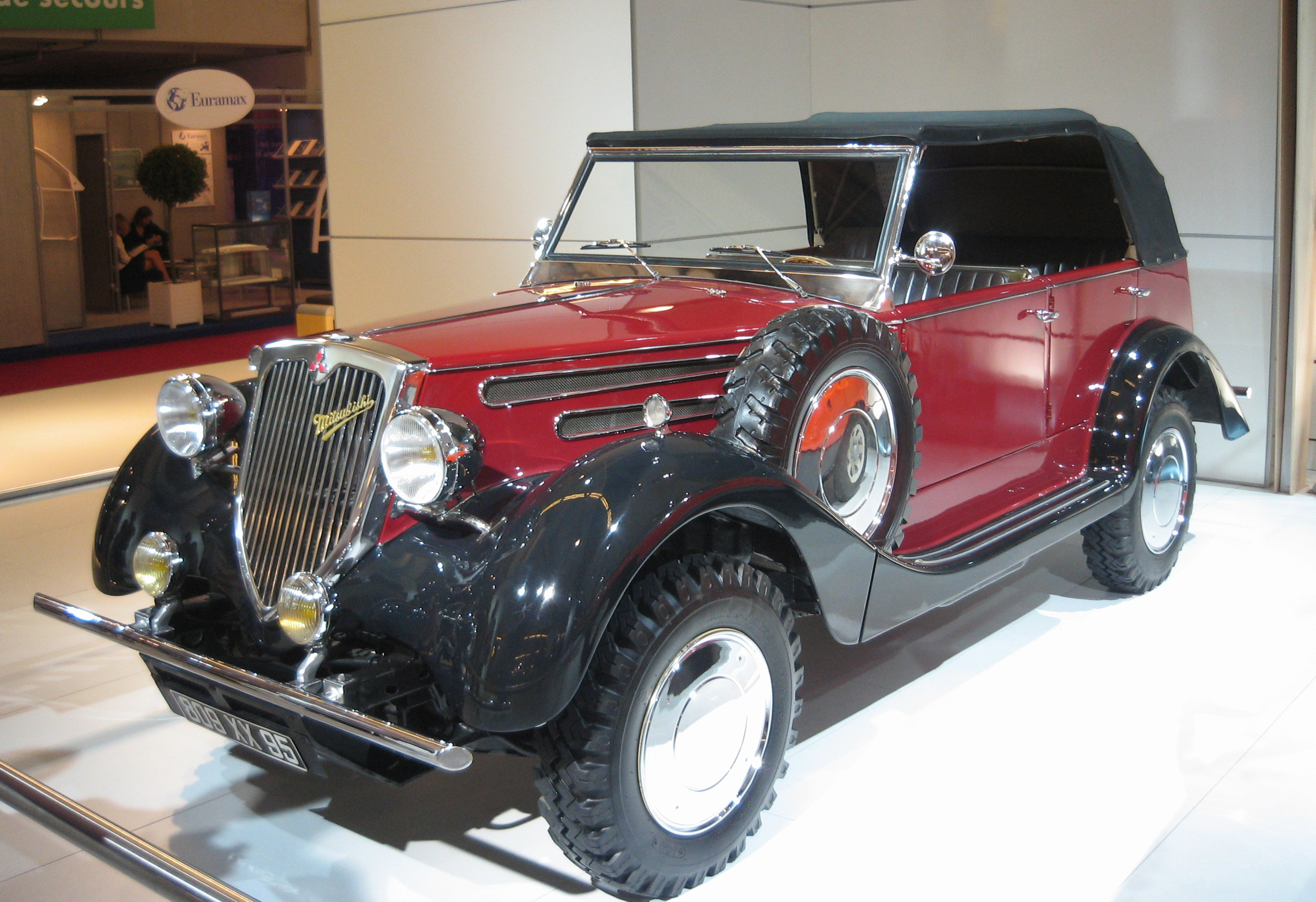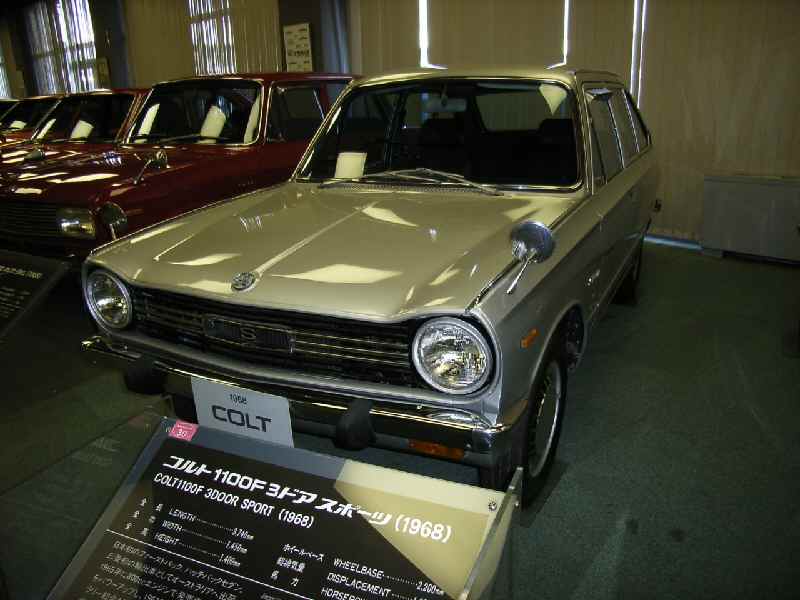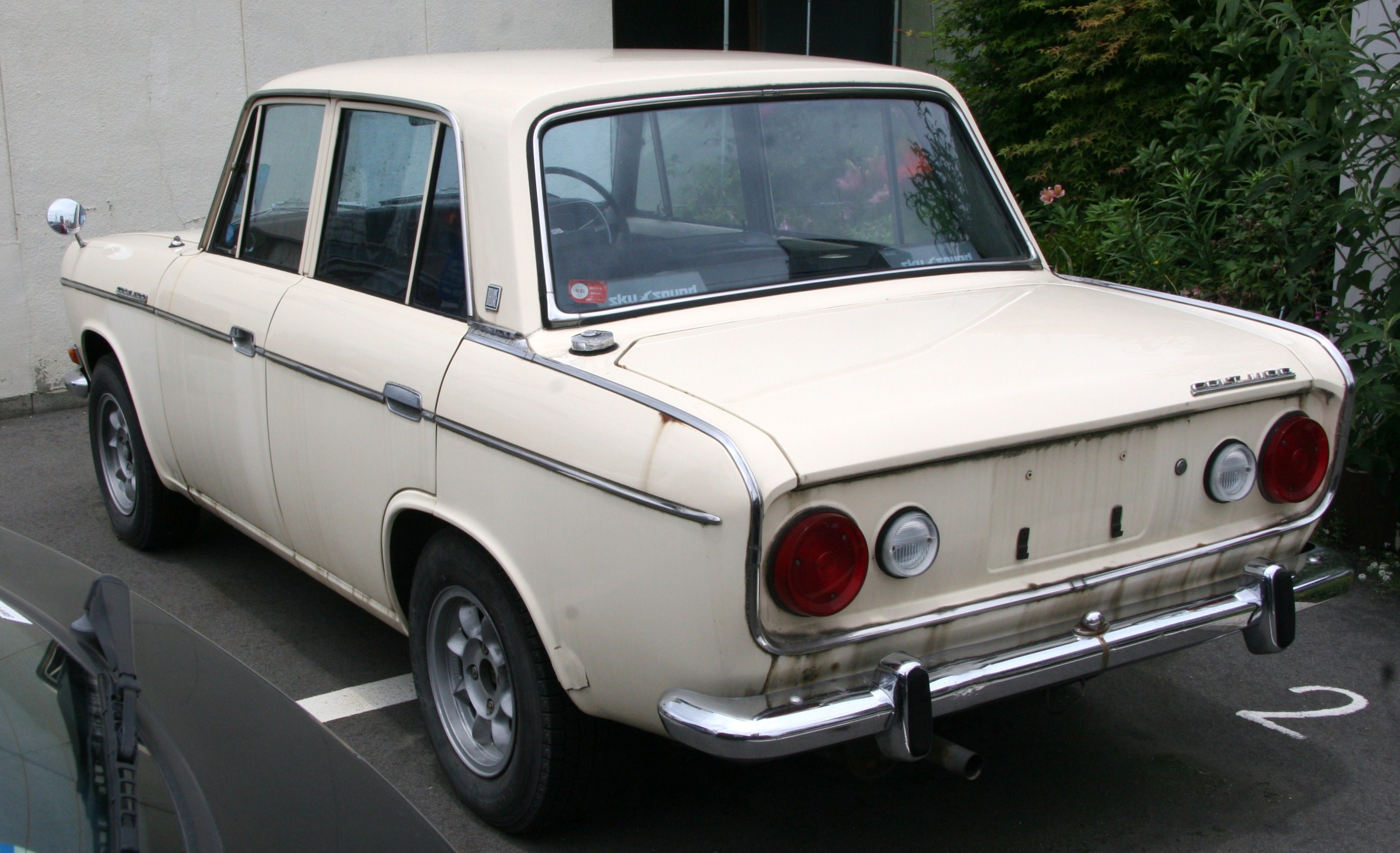|
Mitsubishi Colt
The Mitsubishi Colt is a nameplate from Mitsubishi Motors that has been applied to a number of automobiles since 1962. It was first introduced with a series of kei and subcompact cars in the 1960s, and then for the export version of the subcompact Mirage between 1978 and 2002. Chrysler, Mitsubishi's longtime partner, also used the name when applying its long-running practice of rebadging Mitsubishi vehicles as the Dodge and Plymouth Colt captive imports for the North American market between 1970 and 1994. The most recent version was a subcompact car model manufactured between 2002 and 2013, sold under the Colt nameplate internationally. Mitsubishi replaced this series in 2013 with a newer generation which reverted to the Mirage name. In addition to these small cars, "Colt" in the Mitsubishi vernacular has been used for unrelated vehicles of various forms as discussed below. The name has also been disaffiliated from Mitsubishi as an independent marque in some markets. Nameplate ... [...More Info...] [...Related Items...] OR: [Wikipedia] [Google] [Baidu] |
Mitsubishi Motors
is a Japanese multinational automobile manufacturer headquartered in Minato, Tokyo, Japan.Corporate Profile , Mitsubishi Motors website, 19 June 2008 In 2011, Mitsubishi Motors was the sixth-largest Japanese and the 19th-largest worldwide by production. Since October 2016, Mitsubishi has been one-third (34%) owned by , thus a part of the Renault–Nissan–Mitsubishi Alliance. Besides being part of the ... [...More Info...] [...Related Items...] OR: [Wikipedia] [Google] [Baidu] |
Mitsubishi Motors Engines
This is a list of engines produced by Mitsubishi Motors since 1964, and its predecessors prior to this. Explanation of codes The Mitsubishi zaibatsu had been broken up into three companies by the US occupying forces. Automobile and truck engines were mainly built by three branches of one of these companies, Central Heavy Industries (Shin-Mitsubishi Heavy Industries from 1952). These three branches (Mizushima, Nagoya, and Kyoto Engineering Works) were established as clusters of the many small aircraft factories built during the war. Thus, Mizushima developments gained the ME code, followed by a numerical, while engines developed in Nagoya became the NE-series and Kyoto-developments were named KE. The numbers do not in any way relate to each other or across letter codes and were purely issued in order of development. In 1964 the three companies were merged into Mitsubishi Heavy Industries and eventually a new naming system emerged. Since the introduction of the 2G10 engine in October ... [...More Info...] [...Related Items...] OR: [Wikipedia] [Google] [Baidu] |
Hurstville, New South Wales
Hurstville is a suburb in Southern Sydney, New South Wales, Australia. It is 16 kilometres south of the Sydney CBD and is part of the St George area. Hurstville is the administrative centre of the local government area of the Georges River Council. The suburb is predominantly Asian Australian in character, with 63% of the population of Asian origin, among the highest in the country. Sometimes described as "Sydney's Real Chinatown", an estimated 37% of residents are immigrants from mainland China. History The name Hurstville is derived from the English 'hurst', meaning 'a wooded eminence', and 'ville', meaning 'town'. Aboriginal culture Although it is unknown when they first settled in the Hurstville area, the first inhabitants were Indigenous Australians. At the time of the arrival of the First Fleet, the Indigenous Australians residing in the area were of the Eora tribe, whose numbers spanned along the Georges River, from Botany Bay to present-day Liverpool. Europe ... [...More Info...] [...Related Items...] OR: [Wikipedia] [Google] [Baidu] |
Mitsubishi Motors Australia
Mitsubishi Motors Australia Limited (MMAL) is a fully owned subsidiary of parent company Mitsubishi Motors Corporation of Japan. The company was established in 1980 and began vehicle manufacturing in that year, having taken over the facilities of Chrysler Australia. Australian production ceased in 2008 and since that time the company has been exclusively a vehicle importer. History Chrysler Construction of the vehicle assembly plant at Tonsley Park was commenced by the then owners, Chrysler Australia, in 1963, and the assembly plant was opened in October 1964. Mitsubishi Motors Australia - est. October 1, 1980 After the acquisition by parent company Chrysler of a 15 percent interest in Mitsubishi Motors Corporation in 1971, Chrysler Australia began building Mitsubishi-designed Chrysler-branded vehicles, namely the Chrysler Valiant Galant (later Chrysler Galant), based on the 1972–1977 Mitsubishi Galant and the Chrysler Sigma, a variant of the 1977–1985 Mitsu ... [...More Info...] [...Related Items...] OR: [Wikipedia] [Google] [Baidu] |
Front-wheel Drive
Front-wheel drive (FWD) is a form of engine and transmission layout used in motor vehicles, where the engine drives the front wheels only. Most modern front-wheel drive vehicles feature a transverse engine, rather than the conventional longitudinal engine arrangement generally found in rear-wheel drive and four-wheel drive vehicles. Location of engine and transmission By far the most common layout for a front-wheel drive car is with the engine and transmission at the front of the car, mounted transversely. Other layouts of front-wheel drive that have been occasionally produced are a front-engine mounted longitudinally, a mid-engine layout and a rear-engine layout. History Prior to 1900 Experiments with front-wheel drive cars date to the early days of the automobile. The world's first self-propelled vehicle, Nicolas-Joseph Cugnot's 1769/1770 "fardier à vapeur", was a front-wheel driven three-wheeled steam-tractor. It then took at least a century, for the first e ... [...More Info...] [...Related Items...] OR: [Wikipedia] [Google] [Baidu] |
Mitsubishi Colt 800
The Mitsubishi Colt 800 is the first of a series of passenger cars with a fastback/hatchback design produced by Mitsubishi Motors from November 1965. It was introduced as a two-door fastback sedan, the first such design in the Japanese market. The series was discontinued in 1971, after the introduction of the company's Galant sedan but without a real replacement. Colt 800 The 800 was powered by a three-cylinder two-stroke engine of 843 cc capacity producing . This made it more powerful than the projected competitor, Toyota's 700 cc Publica. Equipped with a four-speed manual gearbox and weighing a scant 750 kg, top speed was . While it may have looked like a hatchback, the 800 was never available with a rear hatch. However, both a coupe utility version ("ute" in Australia, where many of these were sold) and a wagon ("Van" in Japanese parlance) were marketed. The Van was clearly based on the ute, with a horizontally split rear tailgate and workmanlike interior. Mitsu ... [...More Info...] [...Related Items...] OR: [Wikipedia] [Google] [Baidu] |
Mitsubishi Colt 1200
The Mitsubishi Colt (A20) was one of their first series of passenger cars produced by Shin Mitsubishi Heavy-Industries, Ltd, one of the companies which would become Mitsubishi Motors. Built from 1963 until 1970, they were available in four body styles (2-dr/4-dr sedan, 2-dr van, and 4-dr wagon) and on two different wheelbases, with gradually increasing engine displacements 1000, 1100, 1200, and 1500. After a May 1968 facelift, they were marketed as the "New Colt". Along with the smaller, fastback Colts they formed the mainstay of Mitsubishi's passenger car lineup in the 1960s. With the late 1969 introduction of the new, larger Colt Galant, the outmoded Colt-series soon faded away, eventually replaced by the smaller Mitsubishi Lancer as well. The dimensions were kept small so as to provide Japanese buyers the ability to purchase a car that complied with the Japanese Government compact car dimension regulations and to keep the annual road tax obligation affordable. Colt (series A ... [...More Info...] [...Related Items...] OR: [Wikipedia] [Google] [Baidu] |
Mitsubishi Colt 1100
The Mitsubishi Colt (A20) was one of their first series of passenger cars produced by Shin Mitsubishi Heavy-Industries, Ltd, one of the companies which would become Mitsubishi Motors. Built from 1963 until 1970, they were available in four body styles (2-dr/4-dr sedan, 2-dr van, and 4-dr wagon) and on two different wheelbases, with gradually increasing engine displacements 1000, 1100, 1200, and 1500. After a May 1968 facelift, they were marketed as the "New Colt". Along with the smaller, fastback Colts they formed the mainstay of Mitsubishi's passenger car lineup in the 1960s. With the late 1969 introduction of the new, larger Colt Galant, the outmoded Colt-series soon faded away, eventually replaced by the smaller Mitsubishi Lancer as well. The dimensions were kept small so as to provide Japanese buyers the ability to purchase a car that complied with the Japanese Government compact car dimension regulations and to keep the annual road tax obligation affordable. Colt (series A ... [...More Info...] [...Related Items...] OR: [Wikipedia] [Google] [Baidu] |
Mitsubishi Colt 1500
The Mitsubishi Colt (A20) was one of their first series of passenger cars produced by Shin Mitsubishi Heavy-Industries, Ltd, one of the companies which would become Mitsubishi Motors. Built from 1963 until 1970, they were available in four body styles (2-dr/4-dr sedan, 2-dr van, and 4-dr wagon) and on two different wheelbases, with gradually increasing engine displacements 1000, 1100, 1200, and 1500. After a May 1968 facelift, they were marketed as the "New Colt". Along with the smaller, fastback Colts they formed the mainstay of Mitsubishi's passenger car lineup in the 1960s. With the late 1969 introduction of the new, larger Colt Galant, the outmoded Colt-series soon faded away, eventually replaced by the smaller Mitsubishi Lancer as well. The dimensions were kept small so as to provide Japanese buyers the ability to purchase a car that complied with the Japanese Government compact car dimension regulations and to keep the annual road tax obligation affordable. Colt (series A ... [...More Info...] [...Related Items...] OR: [Wikipedia] [Google] [Baidu] |
Mitsubishi Colt 1000
The Mitsubishi Colt (A20) was one of their first series of passenger cars produced by Shin Mitsubishi Heavy-Industries, Ltd, one of the companies which would become Mitsubishi Motors. Built from 1963 until 1970, they were available in four body styles (2-dr/4-dr sedan, 2-dr van, and 4-dr wagon) and on two different wheelbases, with gradually increasing engine displacements 1000, 1100, 1200, and 1500. After a May 1968 facelift, they were marketed as the "New Colt". Along with the smaller, fastback Colts they formed the mainstay of Mitsubishi's passenger car lineup in the 1960s. With the late 1969 introduction of the new, larger Colt Galant, the outmoded Colt-series soon faded away, eventually replaced by the smaller Mitsubishi Lancer as well. The dimensions were kept small so as to provide Japanese buyers the ability to purchase a car that complied with the Japanese Government compact car dimension regulations and to keep the annual road tax obligation affordable. Colt (series A ... [...More Info...] [...Related Items...] OR: [Wikipedia] [Google] [Baidu] |
Compact Car
Compact car is a vehicle size class — predominantly used in North America — that sits between subcompact cars and mid-size cars. "Small family car" is a British term and a part of the C-segment in the European car classification. However, prior to the downsizing of the United States car industry in the 1970s and 1980s, larger vehicles with wheelbases up to were considered "compact cars" in the United States. In Japan, small size passenger vehicle is a registration category that sits between kei cars and regular cars, based on overall size and engine displacement limits. United States Current definition The United States Environmental Protection Agency (EPA) ''Fuel Economy Regulations for 1977 and Later Model Year'' (dated July 1996) includes definitions for classes of automobiles. Based on the combined passenger and cargo volume, compact cars are defined as having an ''interior volume index'' of . 1930s to 1950s The beginnings of U.S. production of compact cars we ... [...More Info...] [...Related Items...] OR: [Wikipedia] [Google] [Baidu] |
Mitsubishi Heavy Industries
is a Japanese multinational engineering, electrical equipment and electronics corporation headquartered in Tokyo, Japan. MHI is one of the core companies of the Mitsubishi Group and its automobile division is the predecessor of Mitsubishi Motors. MHI's products include aerospace and automotive components, air conditioners, elevators, forklift trucks, hydraulic equipment, printing machines, missiles, tanks, power systems, ships, aircraft, railway systems, and space launch vehicles. Through its defense-related activities, it is the world's 23rd-largest defense contractor measured by 2011 defense revenues and the largest based in Japan. History In 1857, at the request of the Tokugawa Shogunate, a group of Dutch engineers were invited, including Dutch naval engineer Hendrik Hardes, and began work on the ''Nagasaki Yotetsusho'' 長崎鎔鉄所 , a modern, Western-style foundry and shipyard near the Dutch settlement of Dejima, at Nagasaki. This was renamed ''Naga ... [...More Info...] [...Related Items...] OR: [Wikipedia] [Google] [Baidu] |


_GL_sedan_01.jpg)




